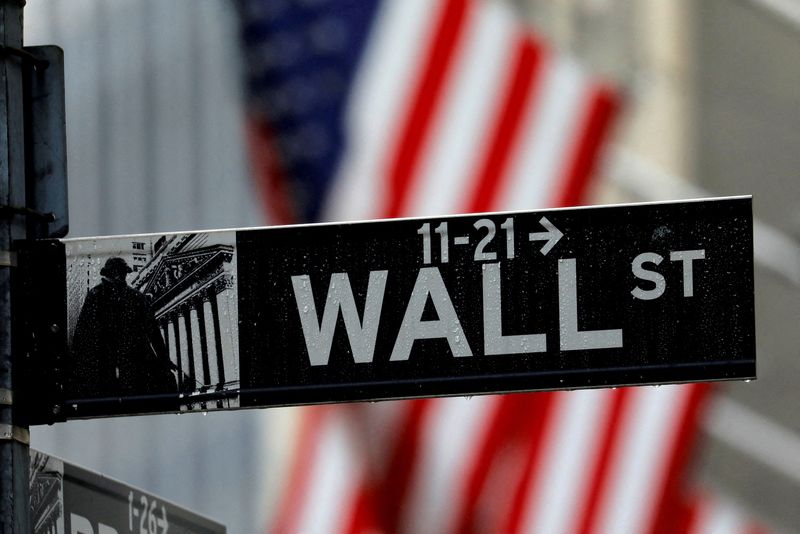Powell’s speech, Nvidia’s chips, Meta deal - what’s moving markets
Investing.com-- U.S. stock index futures edged higher Friday, with investors wary in anticipation of more economic cues from Federal Reserve Chair Jerome Powell’s address at the Jackson Hole Symposium.
At 05:20 ET (09:20 GMT), Dow Jones Futures rose 125 points or 0.3%, S&P 500 Futures gained 15 points, or 0.2%, and Nasdaq 100 Futures climbed 30 points, or 0.1%.
The major indices closed lower Thursday, with the broad-based S&P 500 posting a fifth straight day of declines.
As of Thursday’s close, all three major averages were headed for a losing week. The S&P 500 is off 1.2% week to date, the NASDAQ Composite is down 2.4% and the Dow Jones Industrial Average is on pace for a 0.4% slide.
Powell speech at Jackson Hole in focus
Powell is set to speak at the Jackson Hole Symposium later in the session, potentially offering up more cues on the economy and the Fed’s plans for interest rates.
His address comes amid increasing doubts over whether the Fed has enough impetus to cut rates in September.
The minutes of the Fed’s late-July meeting showed policymakers still remained cautious over cutting interest rates in the near-term, especially amid uncertainty over the inflationary impact of President Donald Trump’s trade tariffs.
Policymakers were also seen focusing more on managing inflation than stemming more labor market weakness.
Kansas City Fed President Jeffrey Schmid, a voting member, said the central bank isn’t rushing to cut interest rates, pointing to inflation still running above its 2% target and a resilient labor market.
Separately, Cleveland Fed President Beth Hammack, a non-voting member, voiced concern Thursday that stubborn inflation may rule out an interest-rate cut in September.
Fed fund futures are pricing in a 73.1% chance the Fed will cut rates by 25 basis points in September, down sharply from the 90.2% chance seen a week ago, CME Fedwatch showed.
UBS lifts S&P 500 targets
The second-quarter earnings season is now largely finished, and UBS has lifted its price targets for the S&P 500, citing strong second-quarter earnings and improved economic conditions.
The investment bank increased its year-end S&P 500 target to 6,600 and its June 2026 target to 6,800, with the index having closed Thursday at 6,370.17.
Second-quarter earnings season proved particularly strong, with S&P 500 earnings growing at 8%, exceeding UBS’s initial 5% expectation. The "Magnificent 7" tech stocks delivered 30% growth, surpassing the bank’s 20% forecast. The median company beat estimates by 4.5 percentage points, higher than the typical 3.5 percentage point beat.
UBS noted that third-quarter guidance was also positive, suggesting no slowdown in profit growth despite tariffed goods now reaching store shelves.
On an individual corporate level, both Intuit (NASDAQ:INTU) and Zoom Video Communications (NASDAQ:ZM) will be in the spotlight after the companies posted results after the close Thursday.
Meta Platforms (NASDAQ:META) signed a $10 billion deal with Alphabet’s Google (NASDAQ:GOOGL), the Information reported, which will see the Facebook owner use Google Cloud’s servers, storage, and other services over the next six years.
Meta, along with Wall Street’s so-called AI Hyperscalers, is racing to build superintelligent AI amid growing calls from investors for returns on the hundreds of billions of dollars poured into AI development.
Crude set for winning week
Oil prices edged higher Friday, on track to snap a two-week losing streak, amid increasing signs that peace negotiations between Russia and Ukraine were stalling.
At 05:20 ET, Brent futures gained 0.1% to $67.68 a barrel, and U.S. West Texas Intermediate crude futures rose 0.1% to $63.54 a barrel.
Both contracts climbed more than 1% in the prior session. Brent has risen 3% this week, while the WTI has gained around 1.4%.
The three-and-a-half-year war in Ukraine continued unabated on Thursday, and traders are pricing in more risk that the supply of Russian crude to the global market remains disrupted.
Oil prices were also supported by a larger-than-expected drawdown from U.S. crude stockpiles in the last week, indicating strong demand.
Ambar Warrick contributed to this article
